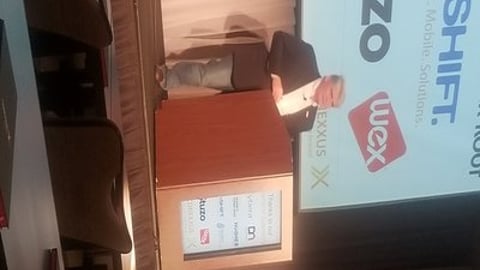Innovating & Prioritizing Are the Keys to C-store Digital Transformation
NASHVILLE, Tenn. — Change is never easy. When it comes to the convenience channel, the same can be said about digital transformation.
"Digital is not just a marketing channel or a fad," said Ed Dzadovsky, vice president, North America IT, at Circle K, the global retail banner of Canada-based Alimentation Couche-Tard Inc. "We are trying to figure out what it means for us."
Speaking on a panel with other c-store IT leaders at the 2019 Conexxus Annual Conference, Dzadovsky noted that the challenges of digital transformation are not around focusing on the customer, but rather focusing on the customer experience.
As he pointed out, digital transformation is creating new ways to live, work and play.
"When have we done that in the c-store space?" he asked, adding that as a customer, the convenience store experience has not changed significantly for him.
Bringing his previous experience from McDonald's into convenience retailing with Circle K, Dzadovsky shared several lessons he's learned:
- Standardization is key.
- Flexible technology pays off when a company is ready to make a big move.
- Nailing crossfunctional governance is essential.
- Focus on "no regret" moves to get in the game with a minimal viable product.
He also advised that it is the IT team's responsibility to keep the executive leadership team focused on standardization and not chase "the shiny objects."
Engaging & Prioritizing
But how do you get the IT team engaged with the rest of the overall business?
According to Jim Wenner, vice president of IT at Sheetz Inc., the first step for the Altoona, Pa.-based convenience store chain was getting the IT team members out of the office. Sheetz encourages its IT department to develop one-on-one relationships with other members of the organization.
"We live in the world of technology, but our business doesn't," Wenner said.
One of the challenges of the IT department, Wenner pointed out, is figuring out if it is putting the department's finite resources in the right places. To get the answer, retailers need to have a written IT plan or strategy, and there needs to be business options.
That's where technology crosses over into being a "magical balancing act," as Tom Dransfield, IT director at Kent Cos., called it. Midland, Texas-based Kent Cos. is the parent company of Kent Kwik convenience stores.
The balancing act, Dransfield explained, is comprised of four building blocks:
- Ease of use — When technology is too cumbersome or difficult to use, adoption stalls and, if that technology is customer facing, sales are affected.
- Reliability — Businesses are more likely to know when technology doesn't work, not when it does.
- Security — To sleep better at night, retail IT team members need to stay in contact with third-party support vendors to ensure they are following acceptable practices, adopt the principle of least privilege, and encourage security as a culture within the business.
- Scalability — When the business focuses on growth, it doesn't want to double support.
Innovating
When thinking about retail technology, the first word that often comes to mind is innovation. However, it needs to be the right innovation, the panelists urged.
"The most important thing with innovation is that it is bringing value to the business and you're not just innovating for innovation's sake," said Sorin Hilgen, chief technology officer at Westborough, Mass.-based Cumberland Farms.
Innovation that adds value includes new products and processes, changes that help retailers to better connect with guests and meet expectations, and revisions to internal processes, Hilgen explained.
He believes the best approach to innovation is through a five-step design-thinking process:
- Empathy: Truly understand the problem you are trying to solve.
- Define: Describe the actionable problem statement.
- Ideate: Identify the solutions.
- Prototype: Develop quick, scaled-down solutions to experiment.
- Test: Execute and measure multiple test phases.
Cumberland Farms takes a grassroots approach to innovation: It can happen anywhere and at any time. "You can't really plan innovation," Hilgen said.
And ensuring successful innovation takes some work. He also advised retailers to:
- Establish a training program and immerse the culture of innovation across the whole organization;
- Empower employees to come up with ideas;
- Fail fast and fail often; and
- Take risks and learn from failure.
The 2019 Conexxus Annual Conference took place April 28 to May 2 at the Loews Vanderbilt in Nashville.






